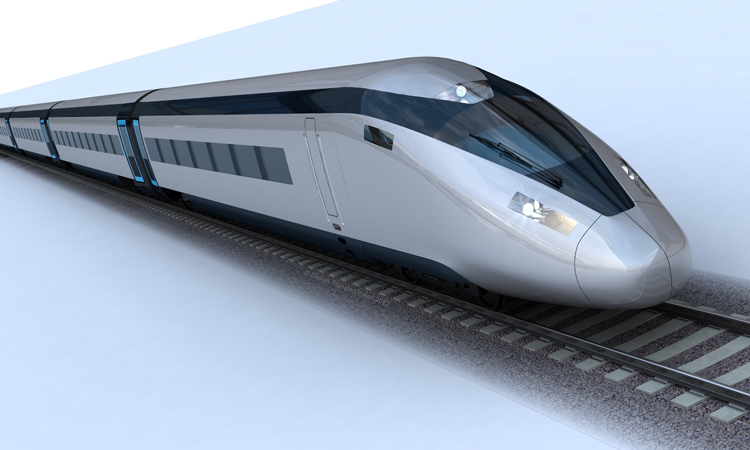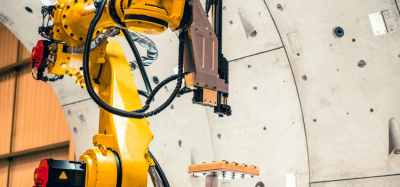HS2 will offer high-speed, frequency and capacity between major cities
Posted: 3 May 2015 | Professor Andrew McNaughton - High Speed Two Ltd | No comments yet
High Speed Two (HS2) is a completely new rail network that will connect up eight out of 10 of Britain’s biggest cities and provide the backbone for inter-city travel across the island over the next 200 years. Regular European Railway Review readers may have seen a previous article1 from Professor Andrew McNaughton – HS2’s Chief Engineer and Technical Director – explaining the work that is being done to develop a brand new passenger experience that will make HS2 the most attractive way of travelling between large population centres. Here, Andrew gives an update on how the project is progressing as the start of construction in 2017 draws closer.


HS2 will offer high-speed, frequency and capacity between major cities – and equally importantly – very high reliability compared to the current UK railway, which was bequeathed to us by the Victorians. Lessons are being learned from across Europe and around the world to put together what will be the one of the most intensively used high-speed lines, tailored to our passengers’ specific needs. In turn, HS2 will act as an engine for economic growth as people and businesses are brought closer together on a completely reliable transport system.
Legislation process
We are currently progressing the first phase of HS2, from London to the West Midlands in the Houses of Parliament. We are doing this through a piece of legislation called a Hybrid Bill – essentially the planning permission to build the first section of the network. It is called a Hybrid Bill because it is both ‘public’ in that it affects and benefits the whole population and also ‘private’ as it will affect specific people by giving powers to compulsory purchase land from individuals owners.
Our plans are being examined by a special committee of UK Members of Parliament and it is a demanding test of the thousands of detailed design decisions that have been made – it is rightly challenging given the impact on both individuals, businesses and the environment along the route. Good progress has been made since we submitted the Bill in November 2013 and we hope by December 2016 to have full powers to start building in 2017 and then operating in 2026.
The next phase to take HS2 north of Birmingham to Manchester and Leeds will follow a similar process. We can start preparing the necessary materials once there is a final decision on the precise route and where the new stations will be located. An update on that is expected from Transport Ministers later in 2015.
Preparation for construction
Alongside the important activity in the Westminster Parliament, we have also started an extensive engagement programme to get the supply market HS2-ready ahead of construction.
In autumn 2014, we held supply chain conferences in Manchester and London. Both events generated great interest and were fully booked. Delegates representing more than 1,000 companies from Britain, the rest of Europe and around the world, were able to learn for the first time how the HS2 procurement process will work and the type of opportunities that will be on offer. More than half of the delegates came from small or medium-sized firms. In total, companies will be able to compete for £10 billion worth of contracts. We want to ensure that the most progressive companies, committed to innovation and to developing a legacy of skilled people compete for this work. Further conferences are planned this summer in Scotland, Wales and Northern Ireland.
In March 2015 we published three questionnaires for prospective contractors to complete. It may seem like a rather dry process but it is an important milestone in preparation for the procurement that will get underway in earnest later in 2015. It’s a standard exercise in the UK’s public sector but it enables us to identify the contractors that can best meet our requirements.
We also expect to start making recommendations for decisions on rolling stock this year and we will be speaking to the world’s leading train suppliers to capture the current thinking and opinions that will help shape our strategy. What we do know now is that trains are anticipated to be 200m-long, generally operating in pairs to allow us to carry up to 1,100 passengers a time at speeds of up to 360km/h. ‘Captive’ trains will operate only on the high-speed line while those which are ‘classic compatible’ will also be able to run on the existing network. We are planning for 165 trains in total.
At the time of writing, our ground investigation (GI) programme is well underway. This is a hugely important stage in pre-construction because a full understanding of the condition of the ground before we start detailed design of the railway will save money and time throughout the course of construction. Initial work will be carried out by nine contractors who were appointed in early-2015. These companies will provide the necessary detailed geological survey information for the first phase.
Whether it is trains or stations; one of the most interesting aspects of the new railway is exactly how everything will look. Our engineering, architectural and design teams are committed to delivering a world-class project and have been working alongside leading UK designers to produce our ‘Design Vision’ – setting out the framework for how excellence will be achieved. There are three major themes: people, place and time. We want to design a railway that everyone can enjoy, one which creates spaces that enhance quality of life for those who use them and a project that stands the test of time. We are appointing a high profile independent Design Panel to help us achieve excellence in every aspect of HS2.
Another part of the development is the work we are doing with our specially assembled group of transport passengers, representing people from all walks of life across the UK. During regular meetings and through an online network they are influencing our thoughts on all aspects of HS2, from travel information and ticketing systems to physical design. We combine the advice from this group with the work of our leading design companies to develop high-speed rail with a uniquely British twist.
In order to let the detailed design contracts, our engineering teams are developing the technical specifications for each element of the railway. At the heart of this is our system capability analysis team, evaluating and assigning performance targets for track, trains and tunnels. These cover the essential characteristics of reliability, availability, maintainability and safety of each railway element. In doing this we are ensuring now that the detailed designs, when built, will come together to achieve the necessary high performing railway.
Phase Two
One of the key aims of HS2 is to help re-balance Britain’s economy. London as a global city and an international financial hub is a powerhouse in the south pulling in investment, jobs and opportunities. In recent years, the political ambition has been to create another powerhouse in the north of England. Improving transport links to and across the cities outside the capital is seen as an important part of that process. Councils in the region have now come together in a new group called Transport for the North to act with one voice and identify their priorities. As aforementioned, now that the new UK Government is in place we hope to get more information on the second phase of the new railway going beyond Birmingham later in 2015.
Skills
In the recent UK election the economy and job creation were at the forefront of the major parties’ campaigning. While HS2 will create many thousands of jobs (up to 25,000 at the peak of construction) we also face the challenge of overcoming a skills gap to ensure we have the expertise needed to build the railway to the required standards. In 2014, the UK Government announced it would be forming a new National College for High Speed Rail. This college will play a significant role in addressing that shortage. The college, with campuses in Birmingham and Doncaster in South Yorkshire, will produce the multi-skilled workforce our rail industry needs to build not only HS2 but future UK infrastructure projects. Through the college, we will train a new generation of engineers and create around 2,000 apprenticeships.
Conclusion
HS2 is Britain’s biggest and most ambitious infrastructure project for generations, and as such we recognise our responsibility not just to deliver high quality but to bring it in on time and on budget. We are rightly expected to be at the heart of urban regeneration, to upskill a generation through the colleges, to create new standards of physical and visual design and to demonstrate exemplary care for the environment both in construction and operation. These challenges are drawing the very brightest and most committed people to be part of HS2 alongside our top quality design partners and key suppliers. It is an exciting time and a privilege to be part of it.
Reference
- ‘HS2 – what will the passenger want?’ – Andrew McNaughton, European Railway Review Volume 20, Issue 5 2014 pages 95-97.
Biography


Issue
Related topics
High Speed Two (HS2), High-Speed Rail, Infrastructure Developments, Route Development







